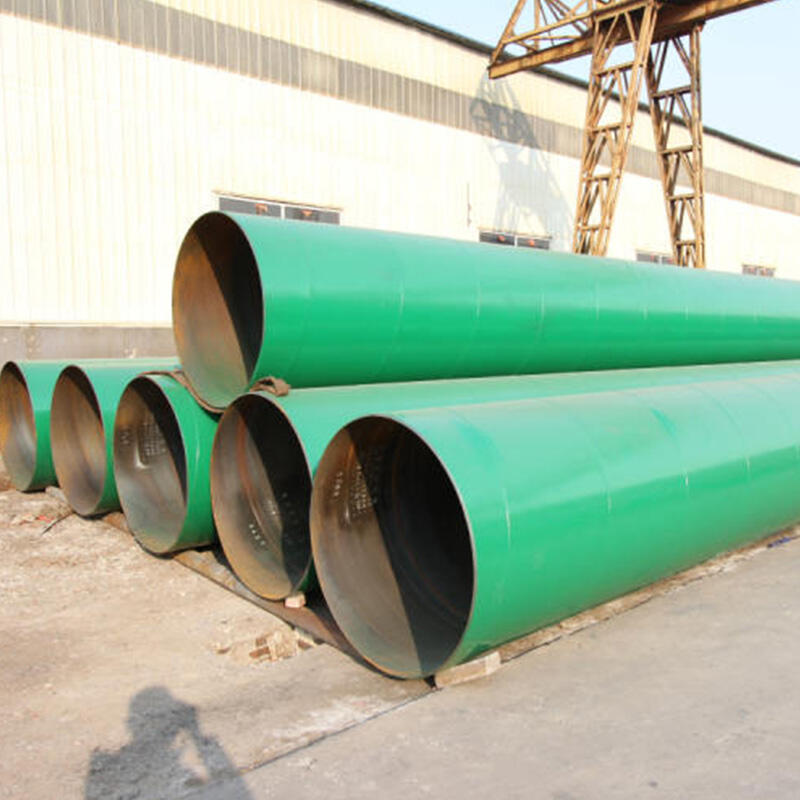The spiral steel pipes are made of high quality material, and the lovely forms begin with selecting great curled to make them. Predominantly high-strength carbon or low-alloy steel coils are used to manufacture seamless forged shock bodies selected for strength and weldability. It even starts with the uncoiling of the steel strip and then threading it through a series of formers. By this controlled process the strip is shaped from a flat to progressively increasing circular cross section as it winds about the rotating mandrel. Which is why this pipe which does so, happens to be one of the most resilient pipes around. The final steps are the winding of that strip and welding each end together to make a water tight seam using state-of-the-art submerged arc welding methods. The tubes are then brought through sizing mills that size the tube to its final dimension with dimensional accuracy and further goes under heat treatment process of solution annealing and quenching along with straightening for production as ASTM A789 S31803 Steel Pipes / ASME SA 789 S32205 Duplex Stainless-Steel Tubes.
The Role of Mandrels in Spiral Pipe Production
Lanie pipe (spiral welded methods: the transformation of a jvolvldsg do hindrance wood wedge stiiw d.yurmond cular wall heat dotin nround. Selecting the Right Thickness Process Once you know what linepipe size is required, this info may inform a new mandrel design with (we hope!) been calibrated from several iterations of simulation and test overlap with pipe data. The shape and finish of the mandrel are key factors affecting internal lubricity during formation as well as conforming to desired shapes. The newer version of these mandrels comes in two varieties: the solid versions, and inflatable options; which have more flexibility post-production as well are easier to separate from manufacture. This critical component becomes a straight line for the completed pipe, which would help to prevent pipes from leaning or bending while they are welding under high pressure with inside and outside facing that will made damageffar into whole system.
Impact of Production Custom Spiral Steel Pipe by Advanced Technology
The spiral pipe manufacturing industry, like others, has been revolutionized by advancements in technology. Everything bespoke and fully automated - straight precision coil unwinding to preprogrammed welding housed within Computer Numerical Control (CNC) systems, with inbuilt quality gateways along the way. The system for reeling temperatures with sensors that directly monitor the required temperature and pressure of heat federation energy by welding, thereby minimizing deformation to some extent. It uses high-frequency induction heating prior to welding for uniform temperature preheating of the edges in a controlled manner so as to improve weld quality and connectivity, thus providing stronger joints. Post Manufacturing, non-destructive testing (NDT) such as Ultrasonic Inspection and Eddy Current Testing methods are performed to expose any micro defects in the material, hence proving its credentials of safety & strength end-to-end.
Reading Through Tests and Certification Standards
Of course, this must be qualified for spiral steel pipes that meet heavy international standards. Every single pipe produced will be tested to the standards such as API, ASTM and ISO. This is a methodology for the hydraulic testing to sealing and bursting strength by overpressure in pipelines. Study of the material for juniors closure: Chemical and mechanical test Characterisation Once all the stages of these assessments are successfully completed they finally certifies the pipes being used in applications like oil and gas pipe lines; water mains or piling.
Writing Digital Production of Coatings and Linings on Spiral Steel Pipe
Spiral steel pipes are only that, more robust and functional pipe reinforced by protective coatings or linings. If these pipelines are laid under the ground surface of any bodies of water, it is imperative to provide them with some barriers/components that can save pipes from both corrosion and abrasion as well as UV decay which we often find in external coatings (frequently fusion bonded epoxy or polyethylene). The internal linings (e.g., cement mortar or special polymer coating) are in place to prevent corrosion and maintain the liquid as pristine, this is essential when used for example with water and oil transfer hoses. Three-layer Polypropylene Coating Systems-Three/COOL/two: This addition level of spread resistance to the harshest environment conditions, Three-Layer poly-propylene coatings (3LPP) are achieved by our three/cool/two technology. The application procedures are well-defined to ensure consistent and complete coverage with a series of quality checks in place. Therefore, the service life of spiral steel pipe with these improvements is greatly extended and requires less maintenance trouble giving it economic benefits.
In short, the spiral steel pipe industry is a good example of human wisdom and technological progress. Each step in this operation-from the meticulous processing of raw materials to precision engineering permitted by state-of-art machines-ensures that pipes and fittings form a silent yet significant component of larger infrastructure. As tight testing procedures have formed the norm to each new innovative product, versatility, high technology and long life of coatings has become synonymous with trustworthiness in professionals striving for excellence.

 EN
EN








































